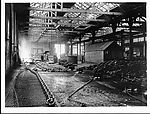 Lloyds Testing House
Lloyds Testing House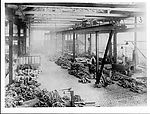 Lloyds Testing House
Lloyds Testing House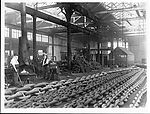 Lloyds Testing House
Lloyds Testing House 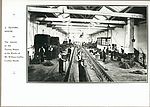 William Griffin Testing House
William Griffin Testing House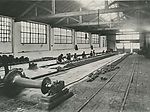 N. Hingley & Sons Test House
N. Hingley & Sons Test House

Cable chain, chain to secure a ship to its anchor, performed a vitally important function as it was concerned with the safety of a ship's crew and that of a valuable ship and its cargo. It was realised very early in the history of the industry that the testing of cable chain was crucial to having confidence in the product.
The standard of wrought iron made by the puddling process could vary widely, and poor quality materials could lead to a failure that may have catastrophic consequences. Also, poor workmanship may lead to the failure of a weld, which again could lead to the loss of life, goods or even a battle.
It was not until 1846 that the Rules of Lloyds Shipping Register made it the duty of their surveyor to ensure that ship’s cables had been tested and stamped. However, standards of testing varied widely, so Lloyds set about drawing up standards for cable chain and its testing.
The first testing, or proving, machine had been constructed in London by Samual Brown in 1812 at his chainworks, and other large manufacturers such as Noah Hingley built their own proof houses. It was not until the first Act of Parliament setting down the standards in law in 1864 that the first testing house in the Black Country, to which any manufacturer could send their products, was set up by the Staffordshire Public Chain and Anchor Testing Company. Lloyds would not recognize a certificate unless the proof house was open to an appointed inspector, or under the control of the Lloyds Register.
Further Acts followed in 1871 and 1874, which raised standards still further, and then in 1899 a further Act brought about the establishment of the Lloyds British Testing Company under the chairmanship of Sir Benjamin Hingley. This organisation ensured that the testing of cables and anchors was to the entire satisfaction of the Lloyds Register of British and Foreign Shipping and contributed to the reputation of the British product abroad.
When testing chain two criteria are taken into account, firstly the breaking strain, or how much it can be pulled before it breaks, and secondly the tensile strain, or how much it can be pulled before it loses its shape. The testing regime consisted of taking three links from every 15 fathoms (27.4m) and subjecting them to the appropriate breaking strain by pulling them with a steam engine. If these links failed a second three links were cut and tested in the same way. If either of the two pieces withstood the breaking strain, the rest of the links would be subject to the appropriate tensile strain. If this test was passed the licenced tester would stamp every five fathoms of the cable chain.
The Lloyds of Netherton Test House, beside the Dudley No.2 Canal, not far from this museum, was the last proving house in the country to close down. This may have been because of its ability to test chain with up to 400 tonnes of breaking strain, more than any other proof house.
Rollover the captions in the box to see the available images in thumbnail format, click the caption to see the full-size image
| Reference: | 654 |
| Keywords: | |
| Archive Ref: | |
| Updated: | Thu 26 Apr 2007 - 1 |
| Interpretation written by | Louis Howe |
| Author's organisation | Curatorial |
| Organisation's website |